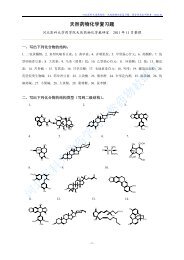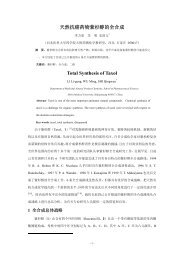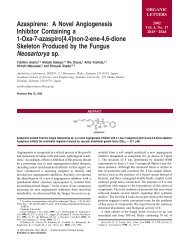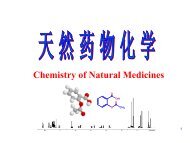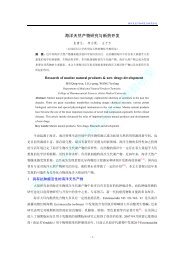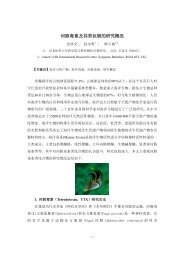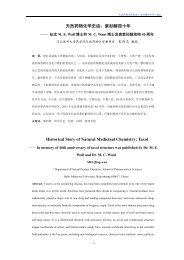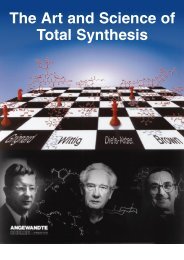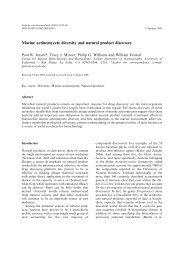Total Synthesis Highlights
Total Synthesis Highlights
Total Synthesis Highlights
You also want an ePaper? Increase the reach of your titles
YUMPU automatically turns print PDFs into web optimized ePapers that Google loves.
of water led to clean addition to the alkyne. Homologation followed by, again, wet Negishi<br />
methylation/iodination set the stage for oxidation to the lactone aldehyde 2.<br />
Both the bicyclic skeleton of 2 and the geometry of the two alkenes direct the pendant chain<br />
toward the aldehyde. In fact, Ni-catalyzed cyclization proceeded smoothly. The product alcohol<br />
emerged as a single diastereomer, but unfortunately the wrong one, so an oxidation/reduction<br />
cycle was required to correct the secondary alcohol center.<br />
The final challenge was the selective epoxidation of the triene 12. There are two concerns: facial<br />
selectivity, and chemoselectivity. The facial selectivity is inherent, as the geometry of the medium<br />
ring is such that only the desired face is exposed. Chemoselectivity was more challenging.<br />
MCPBA reacted indiscriminantly with each of the three alkenes. Reasoning that a bulkier<br />
epoxidizing agent might be more selective, they found that the Shi dioxirane (13) delivered a 7:1<br />
ratio of the two trisubstituted epoxides. It is interesting that the enantiomer of 13 gave only a 2:1<br />
ratio.<br />
52. The Leighton <strong>Synthesis</strong> of Dolabelide D<br />
The macrolides dolabelides A-D, isolated from the sea hare Dolabella, are cytotoxic against<br />
HeLa-S3 cells at concentrations of 1.3 - 6.3 μg/mL. The recent (J. Am. Chem. Soc. 2006, 128,<br />
2796. ) synthesis of dolabelide D (3) by James L. Leighton of Columbia University nicely<br />
highlights the powerful reagent-based methods for acyclic stereoselection that they have recently<br />
developed.



